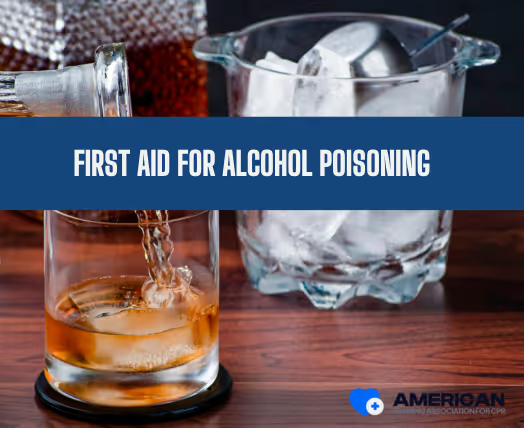.avif)
First Aid Steps for Suspected Carbon Monoxide Poisoning
Immediate first aid focuses on moving the person away from CO, maintaining airway and circulation, and keeping them stable until professional help arrives. Key steps include:
- Remove from exposure: Move the victim to fresh air and ensure your own safety first.
- Call emergency services: Provide location, number affected, symptoms, and suspected source.
- Check responsiveness and breathing: Place unresponsive but breathing victims in the recovery position.
- Administer CPR if needed: Follow standard 30:2 compressions-to-breaths ratio until help arrives.
- Use supplemental oxygen if trained: Provide high-flow oxygen without delaying evacuation.
- Remove contaminated clothing and cool if relevant: Only if safe and necessary.
- Monitor and comfort: Observe breathing, consciousness, skin color, and symptom changes.
- Prevent secondary exposures: Keep bystanders safe and shut off the CO source if possible.
- Follow dispatcher instructions: Cooperate with EMS and report interventions and timelines.
Immediate first aid stops further CO uptake and maintains life, but formal first aid and CPR training equips responders to act confidently and effectively in CO emergencies.
When to Seek Emergency Medical Help?
Seek urgent care for suspected carbon monoxide (CO) exposure if red-flag symptoms occur, such as sudden loss of consciousness, seizure, severe shortness of breath, chest pain, marked confusion or inability to follow commands, persistent vomiting, or multiple people affected in the same space. Pay attention to objective signs or environmental cues, including unresponsiveness, abnormal breathing (apnea or shallow respirations), cyanosis or pallor, rapidly changing mental status, known high CO sources, prolonged exposure in confined spaces, or active CO alarms. High-risk populations, including infants, young children, pregnant individuals, older adults, and people with cardiovascular or respiratory conditions, require a lower threshold for emergency evaluation, as even mild symptoms in these groups can indicate serious hypoxia.
.avif)
Why First Aid Training Matters for Carbon Monoxide Poisoning
First aid training significantly improves outcomes in CO incidents by enabling faster recognition, correct immediate actions, and reduced delays to professional care. Trained responders shorten time-to-treatment, lower secondary injuries, and increase survival odds in household and workplace exposures.
Untrained individuals often misinterpret CO symptoms as flu, delay removal from exposure, or apply incorrect interventions, increasing risk of severe hypoxia, loss of consciousness, or death. Medical outcomes depend on minutes to hours of effective oxygenation.
While training does not replace professional care or source mitigation, it bridges critical minutes, limiting exposure severity and improving interim oxygenation and monitoring. Certified programs covering scene safety, symptom recognition, evacuation protocols, and basic breathing support equip responders to act effectively.
.avif)
How to Prevent Carbon Monoxide Poisoning
Prevention relies on reducing CO sources, early detection, and controlling exposure through engineering, behavioral, and equipment measures.
- Detector placement: Install CO detectors on every level of a home, inside bedrooms, near sleeping areas, and close to fuel-burning appliances. Proper siting ensures early alarms and timely response.
- Ventilation and combustion air management: Maintain chimneys, flues, exhaust fans, and appliance air intakes to prevent incomplete combustion and remove CO from indoor air.
- Appliance selection and use: Choose certified indoor appliances with sealed combustion or vented designs, and avoid scenarios that favor incomplete combustion.
- Maintenance and inspection: Schedule annual professional servicing of HVAC, chimneys, and fuel-burning appliances to catch malfunctions before they produce CO.
- Behavioral practices: Avoid running engines indoors, operating outdoor-only equipment inside, and sleeping in vehicles with engines running. Position generators and grills safely outdoors, away from windows and doors.
- Layered prevention: Combining detection, ventilation, maintenance, and safe behaviors reduces overall CO risk more effectively than any single measure.
Practical tips include following manufacturer guidance, keeping vents clear, and maintaining a documented inspection schedule. Checklists can help track detector placement, ventilation checks, and maintenance intervals. Even with preventive measures, rapid recognition and emergency response remain essential.





.avif)
